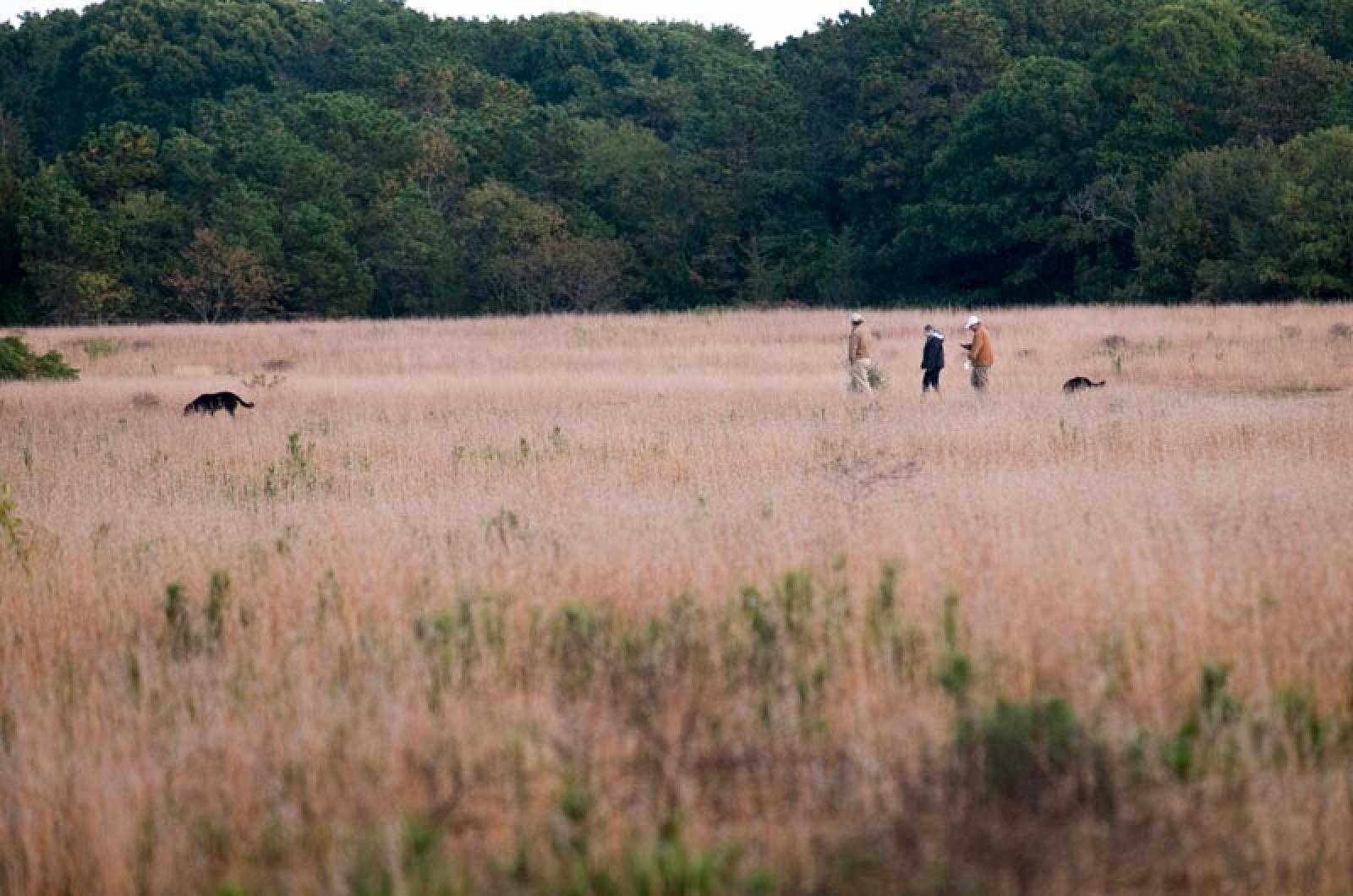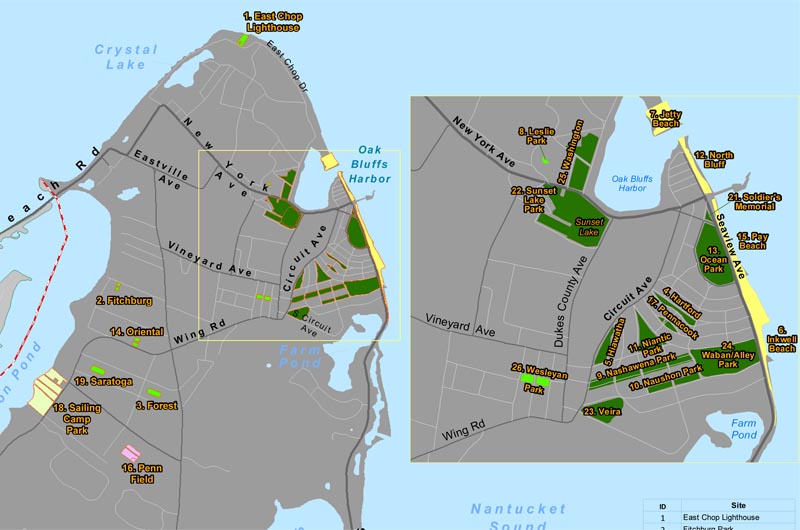Oak Bluffs is known for its parks. There are 20 of them in the port community, including 11 parks that adorn the downtown area, providing respite from the dense development surrounding them.
In Oak Bluffs as a whole, open space makes up 29 per cent of the town’s acreage, at 1,366 acres.
But it’s not enough just to admire the open space and the plentiful parkland, according to the new Oak Bluffs open space and recreation plan, a 40-page draft document that will guide the town in stewardship of these natural resources.
Oak Bluffs conservation agent Elizabeth Durkee said the town must protect, improve, and create more opportunties for the public to enjoy open spaces.
“Oak Bluffs is blessed with great beaches, parks, and hundreds of acres of coastal property,” Mrs. Durkee told selectmen during a presentation plan last week. “The open space plan is a powerful tool for protecting and enhancing those resources.”
The plan, which qualifies the town for state funding, names three main goals: address the threat of climate change, reduce nitrogen in salt ponds, and improve parks and recreational activities.
Mrs. Durkee described ongoing efforts to accomplish these goals. For example, the town is working with an engineering firm to produce a study of the impacts of climate change on the community’s infrastructure.
In other projects, the town has carved trails at the Sailing Camp on Lagoon Pond, and planned for a major restoration at Niantic Park, a favorite spot for recreation.
The parks department also plans to spruce up 10 parks with new signage and new plantings.
Other areas of improvement identified in the open space plan include park accessibility and open space in certain sections of town.
The public beaches in Oak Bluffs are free and beloved but not fully accessible to all visitors. Projections show that the elderly population is likely to grow at a faster rate on the Island than elsewhere in the state, so passive recreational activities are a priority, according to the plan.
The town is looking at ways to install stairs at Pay and Inkwell beaches and eventually, to ensure universal access.
The plan also notes that open space is still lacking in a large midsection of town between Barnes and County Roads, an area saturated with housing developments.
Mrs. Durkee began researching and writing the plan in 2012, incorporating public input gathered at government meetings.
Since 2005, the town has allocated community preservation act funds for many conservation projects including beach restoration efforts and water quality monitoring in the town ponds.
Following strict guidelines from the state, the open space plan takes inventory of all the natural resources in town, including bodies of water, plant species, geologic elements and fisheries and wildlife.
It also makes a case for the importance of conservation interests.
“The environment here is the economy, from beaches and birds to food and fish,” the plan states.
The most pressing issues identified in the plan are planning for climate change and reducing nitrogen in coastal ponds. But being aware of threats to the environment is not the same as being able to address every one of them.
“Funding is the greatest challenge in addressing these issues,” the plan concludes.
The plan is available at the conservation department at town hall.






Comments (3)
Comments
Comment policy »